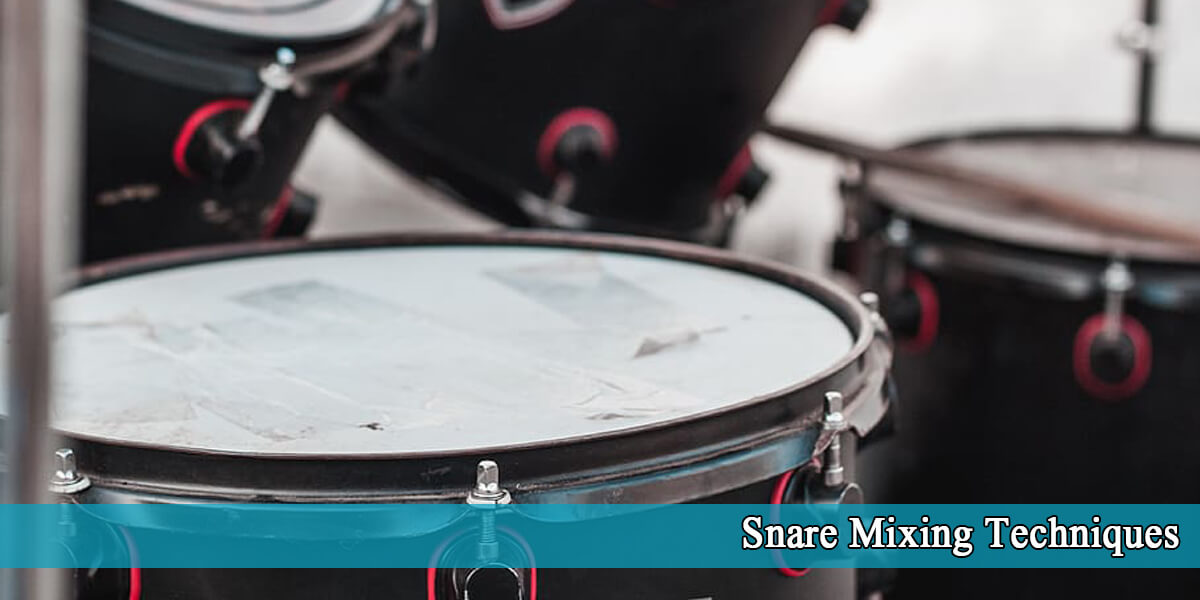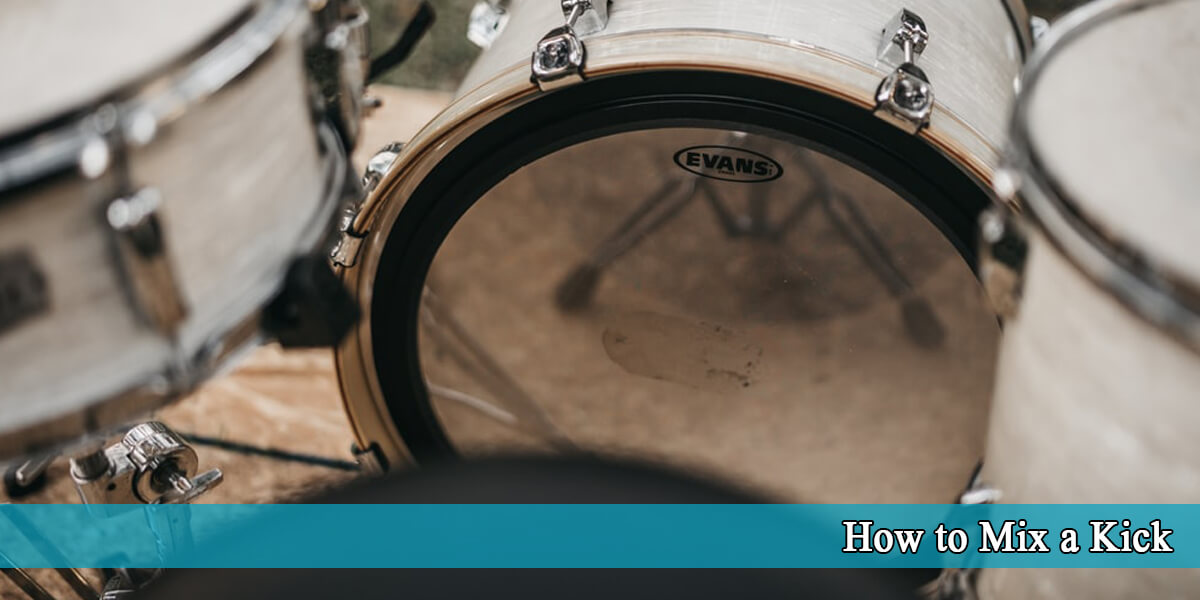How to Record Vocals
Introduction
Every musician dreams of recording in a huge, fancy studio with a world-famous producer. But the reality is, most of us are working with pretty limited budgets.
Luckily, with a few simple tricks, some basic production knowledge, and a little patience, you can get your home recordings sounding surprisingly close to professional studio quality. In this article, we’ll show you how to record vocals and share some easy steps to improve your sound.
One of the biggest giveaways that a song wasn’t recorded professionally is how the vocals sound. So, we’ll let you in on some pro tips for getting great vocal tracks using the gear you already have at home.
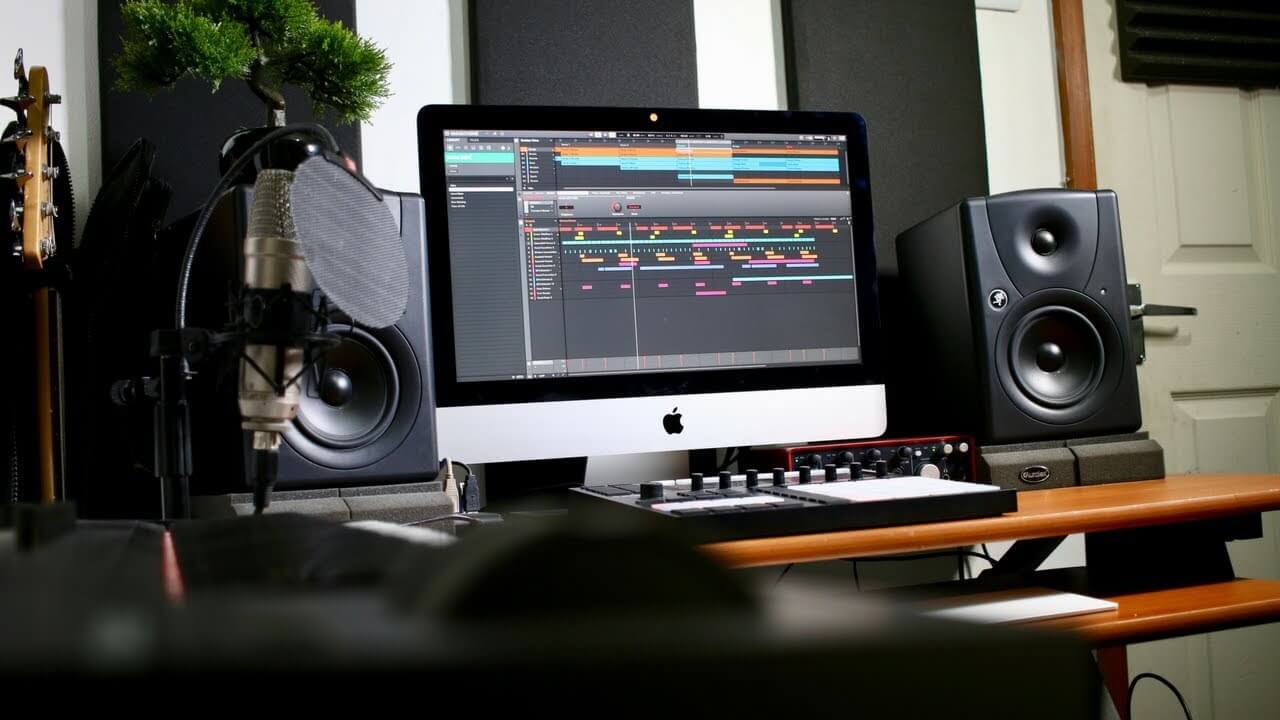
Select the best microphone
There’s a whole world of microphones out there—USB mics, condensers, dynamics, and ribbons—ranging from very affordable to incredibly expensive.
So, which one should you use? Well, that depends on you. Different mics work better in different situations and with different voices.
When it comes to vocals, you might find that a $200 mic suits the voice you’re recording better than a $3,000 one, so try not to get too caught up in expensive gear. Just because you’re using a pricier mic doesn’t always mean you’ll get a better end result.
For lead vocals, we always go for a large-diaphragm condenser microphone because they tend to be clearer and more sensitive than dynamic mics. They’re perfect for capturing the detail and nuances that make a vocal unique, and that’s what makes a vocal recording great.
That’s not to say dynamic mics can’t work for vocals, but they’re usually used in live situations since they’re a bit more rugged.
There are plenty of excellent options on the market in the $200 to $500 range, so you don’t have to break the bank. We’ve found that the Rode NT2000, which is around $500, sounds best for our needs. Before that, we used the Behringer B2Pro, which was less than $200.
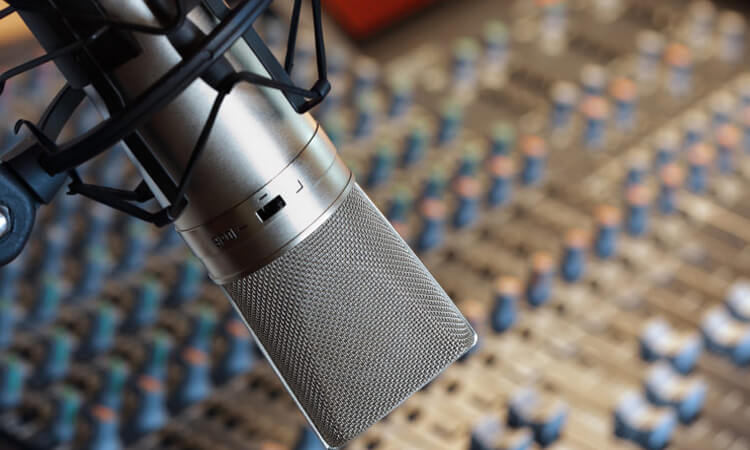
Microphone Placement
This one’s simple, right? You just need the microphone as close to your mouth as possible—right? Well, not exactly!
It’s actually very common to see people record when they’re way too close to the microphone. If your lips are touching the mic, you’ll run into a whole bunch of problems, including the proximity effect. You really want to avoid this.
Ideally, the microphone should be one hand’s width away from your mouth.
We mean the width of your own hand, not someone else’s. This is important because if you need to record again another day, you want your setup to be exactly the same. Otherwise, your recordings might sound noticeably different.
This distance gives you good clarity while also avoiding the dreaded boomy proximity effect.
Here are some tips for microphone positioning:
- Make sure the singer is standing straight and facing the microphone. Good posture gives you better performance.
- Start with the mic horizontal and about six inches away from the singer’s mouth. This is a great default position.
- Lowering and tilting the mic upward toward the singer will emphasize the high-end frequencies.
- Aiming the mic downward toward the singer will emphasize the low-end frequencies.
- Singing closer to the mic will sound warmer and more intimate, but you risk clipping if you get too close.
- Singing farther away from the mic will sound airier and more spacious, but you might lose some sheen and detail.
- Try moving the mic about 20 degrees to the left or right of the singer. Tilting the mic off-axis slightly can help reduce sibilance and plosives.
Proper microphone technique is essential for a great recording. The distance, height, and angle of your mic placement can all change the tone of your vocal recording.
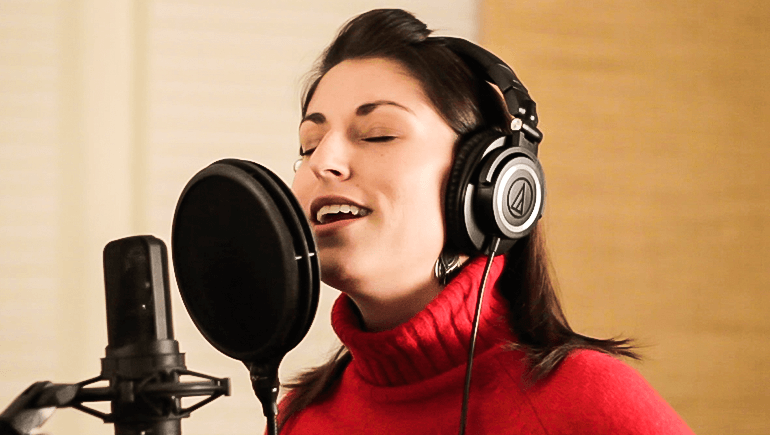
Proximity Effect
Another important factor to consider is the distance from the microphone. Changing the distance between the singer and the mic affects the overall feel of the vocal recording. The farther away the source is, the lighter and less “rounded” the vocal will sound.
This is known as the “proximity effect.” It means that the closer the source is to the microphone, the more pronounced the lower frequencies will be in the recording.
You can use the proximity effect as a creative technique. For instance, if you want a warm, intimate vocal sound, getting closer to the mic can help. However, be careful—if the singer is too close, the sound may become too “boomy” or “boxy.” The sensitivity of the microphone can make this even more noticeable.
Also, when recording vocals up close, you risk capturing unwanted popping sounds when the singer pronounces Ps or Ts. These are called “plosives,” though they’re often referred to as “popping.” Placing a pop filter a few inches in front of the microphone will help reduce this. However, it’s best not to rely on a pop filter alone.
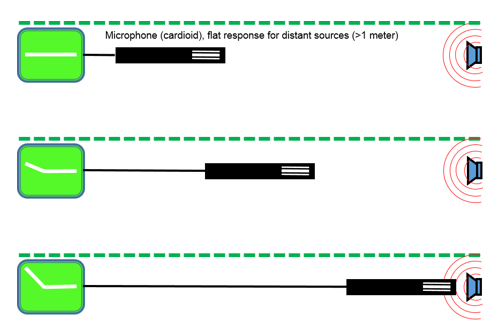
Mic gain and front processing
Many people still like to record at very high levels (around -3 to 0 dB), but you really don’t need to do that anymore. Now that everything is digital, even recording at a lower input level (like -15 or -20 dB) gives you a clean sound with very little noise. We recommend aiming for somewhere between -15 to -7 dB, as it strikes a nice balance.
If your singing volume doesn’t vary too much, you only need to set the level so that the loudest part doesn’t distort. That should work well for most situations. Unless you’re singing a really soft, delicate verse followed by a loud, shouty chorus, you shouldn’t have to adjust your gain level for different sections.
Many engineers use preamps, compression, and EQ when recording into their DAW (Digital Audio Workstation). These can be either hardware or software tools. Just be careful not to use too much compression while recording, because you can’t undo it later when you’re mixing.
We usually aim for no more than 3–4 dB of gain reduction, with a fairly slow attack and release. This helps give your sound a smooth and clear quality. With EQ, it’s a good idea to cut out some of the very low end to remove muddiness, and then make small tweaks to improve your tone. Again, don’t overdo it, because once it’s recorded, you can’t take it back.
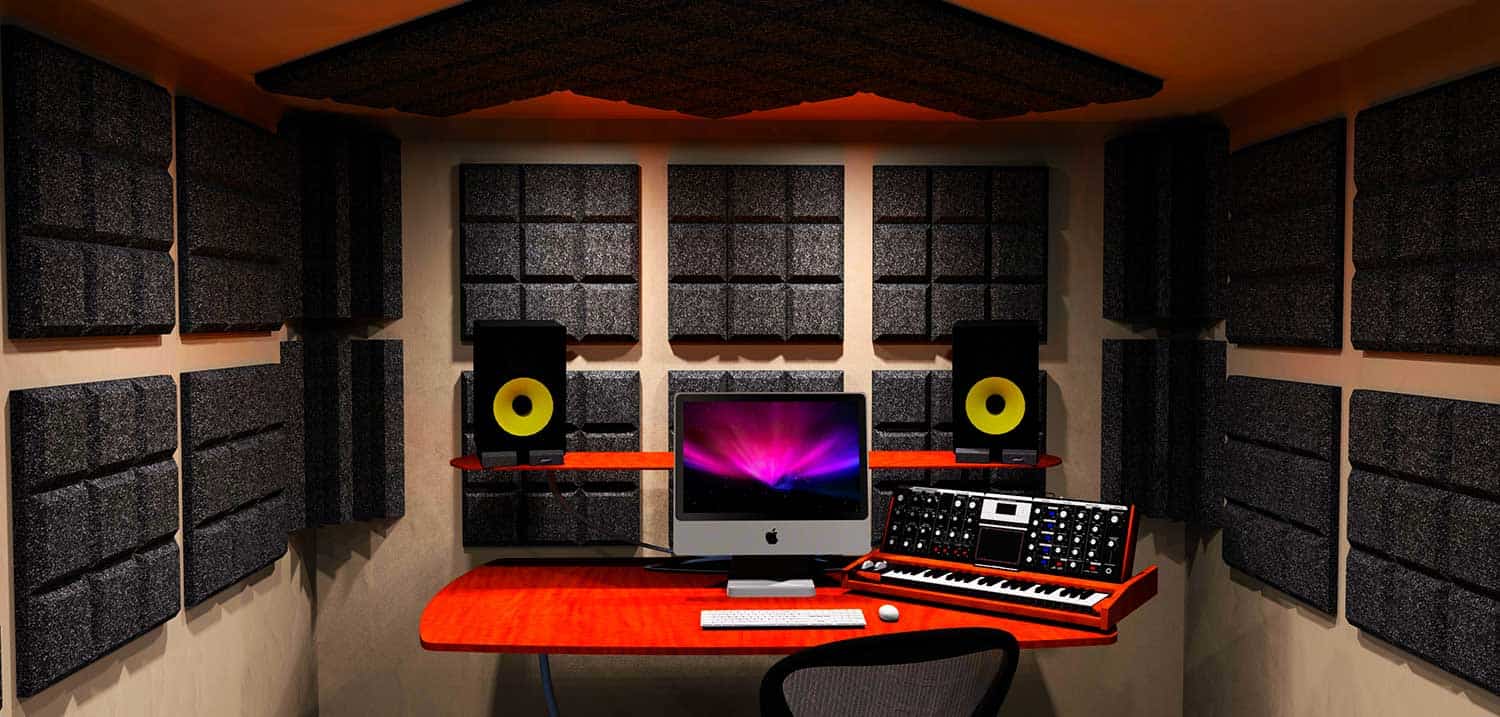
Use double-tracking and backing vocals
Double, triple, or even quadruple tracking your vocal elements is a great way to make them sound thicker and wider, helping them stand out in your mix.
However, you should be selective about where you use this technique. If you apply it throughout your entire song, it will lose its impact. Instead, try using it only in specific parts of the track.
Chorus sections are an excellent spot for this method. By panning the extra tracks left and right, you can create a nice, wide vocal effect.
Try double-tracking your backing vocals as well—it gives them a subtle ‘chorus’ or modulation effect. Rolling off some high frequencies on these tracks will help them sit further back from the main vocal, adding depth to your mix.
Make sure the timing of the singing is consistent when double-tracking, or else it can sound messy. If you’re working with a stripped-back arrangement, double-tracking might not be the best choice, so always consider the vocal sound you want to achieve.

Gear for Recording Vocals
1. Computer
If you bought your computer within the last 3 or 4 years, it will most likely be more than capable of recording and mixing your audio tracks. Over time, you might find that it’s not quite enough for your recording needs. If that happens, you can always upgrade when necessary.
If you decide to upgrade your computer, we recommend going with a standard MacBook or a Windows laptop with strong components designed for music production and mixing.
2. Microphones
Choosing the right microphone will have a huge impact on your final results, so make sure to match the microphone with the vocalist. It’s important to make a few quick test recordings to find the best sound for the vocalist, based on their style and the tone you or the vocalist are aiming for.
Condenser Microphone
Simply put, a condenser microphone is the standard choice for studios because it’s very sensitive and can capture even the softest sounds. When it comes to recording vocals, we mainly recommend using a large-diaphragm condenser microphone.
Dynamic Microphone
Dynamic microphones are great for recording in rooms with lots of background noise or reflective surfaces that haven’t been acoustically treated. They’re much less sensitive than condenser microphones, which makes them perfect for recording in spaces with subpar acoustic treatment or unwanted noise.
Don’t be afraid to try a high-quality dynamic microphone—the results can be surprisingly good in the studio. Plus, dynamic mics tend to avoid the harsh high-end frequencies that cheaper condenser microphones sometimes have.
USB Microphone
If you want a very easy setup, then a USB microphone might be the best choice for you. USB microphones connect to your computer through a USB port, unlike other types of microphones that use XLR cables. Because of this, you won’t need an audio interface when using a USB microphone.
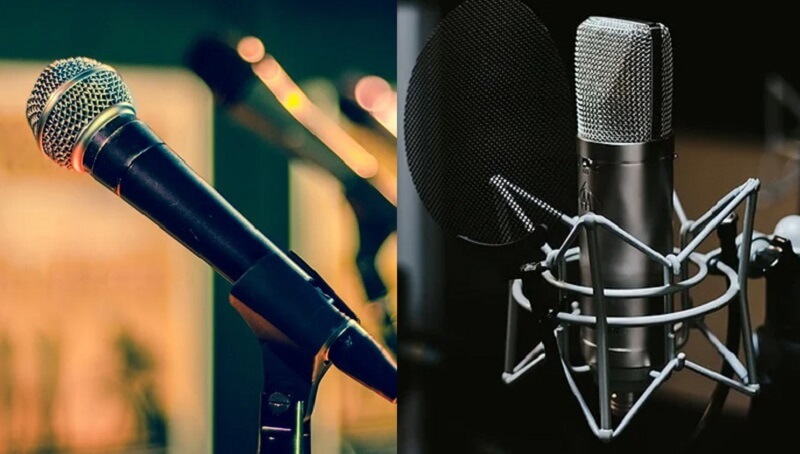
Mic stands
Microphone stands are often easy to overlook when recording vocals, but they’re absolutely essential.
If you’re recording your own vocals or singing, a desktop mic stand works well. Many USB microphones even include a desktop stand.
If you’re recording someone else’s vocals, you’ll probably need a floor boom mic stand.
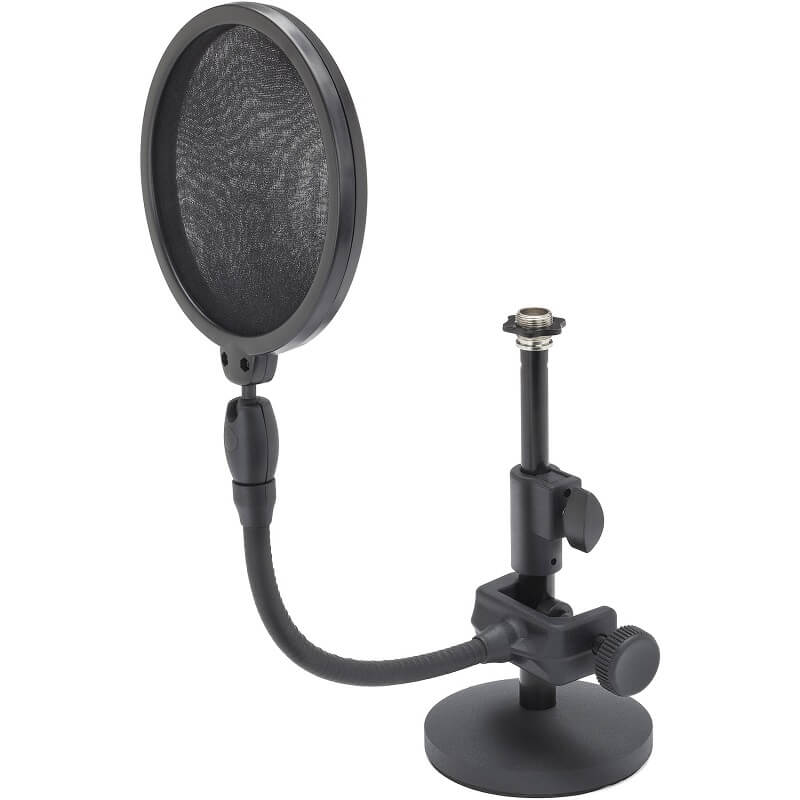
3. Audio Interface
An audio interface is a piece of hardware that connects your computer to your microphone and other equipment using either USB or Thunderbolt cables. Audio interfaces also provide power to your microphone through something called phantom power.
Make sure you choose an audio interface that offers 48-volt phantom power, or you won’t be able to use a condenser microphone with it.
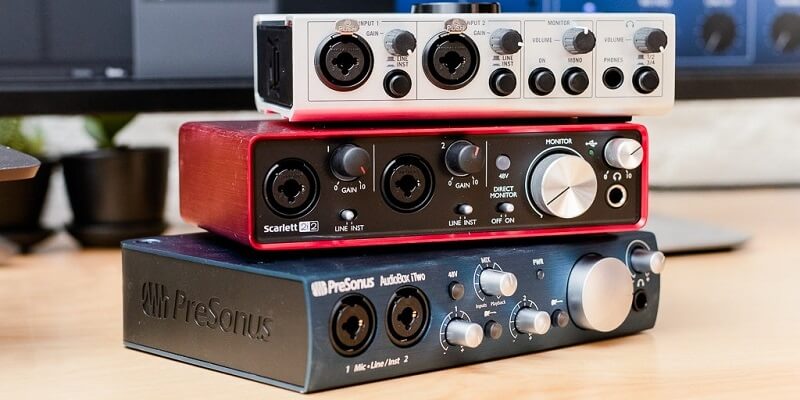
4. Recording Software – DAW (Digital Audio Workstation)
The fourth thing you’ll need is some recording software, also known as a DAW. A DAW (Digital Audio Workstation) is the program that actually records your vocals and saves them to your computer. With this software, you can edit your recordings and add effects to your vocals.
Some of the most popular DAW software includes:
- Pro Tools (Mac & PC)
Pro Tools | First (the free version of Pro Tools) - Logic Pro X (Mac)
- GarageBand (free) (Mac)
- Ableton Live (Mac & PC)
- Reaper (free for the first 60 days) (Mac & PC)
- Cubase (Mac & PC)
5. Headphones
Headphones are used so you can hear your voice and music when you’re recording.
If you’re recording vocals, you’ll need to turn off your audio system or studio monitors. This prevents feedback from the microphone and also stops the microphone from picking up the sound coming out of your speakers.
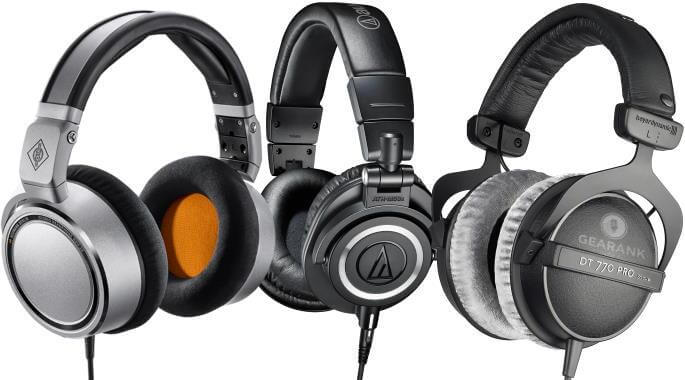
Tips and Tricks for Studio-Quality Vocals
Use Pop Filter
Pop filters help reduce plosives—those bassy popping or thumping sounds that happen when you say words starting with “p” or “b.” Plosives can be very difficult to edit out of your recordings, so it’s best to prevent them from being recorded in the first place.
Some microphones are more sensitive to pops than others, and some vocalists naturally produce more plosives. Listen for pops at the very beginning of your vocal session. We recommend using pop shields made from nylon mesh (not metal mesh), and placing them about three inches from the front of the mic for the best results.
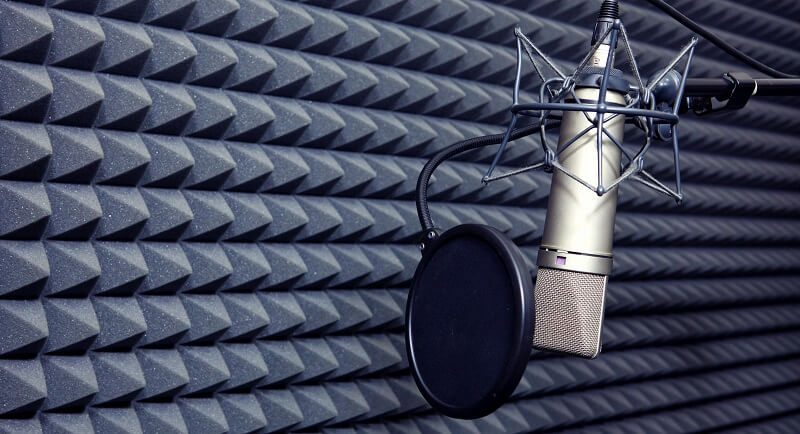
Help the vocalist feel comfy
Great vocal recordings start with a fantastic voice, so do your best to help the singer feel relaxed and comfortable. Everyone gets nervous before recording, and the more at ease the performer is, the better the results will be.
Make sure the vocalist has water nearby, and provide a stand for their notes and music. Also, ensure the temperature in the recording room is just right—not too hot or too cold. Try to keep the mood calm and relaxed, as this will help minimize any nerves.
Rest and Vocal Health
It’s important to be well-rested before a vocal recording session in a studio. Make sure you get a good night’s sleep for at least two nights before your session. Keeping your vocal health in good shape is also key.
We recommend that you avoid talking too much or practicing heavily in the two days leading up to your session. Try to steer clear of alcohol, coffee, and dairy products, as these can cause dehydration, reflux, or extra mucus. And don’t forget to drink plenty of water!
Vocal Warm-Up
It’s important for singers to warm up their vocal cords before recording.
Vocal warm-ups are exercises that prepare the voice for singing. Whether recording in the studio or performing live, these warm-up routines are essential for achieving the best performance.
Vocal exercises also play a key role in improving, developing, and protecting a singer’s voice. Professional singers rely on a variety of effective vocal warm-ups.
Studio sessions can be expensive, and time is valuable. Making sure the singer’s voice is ready will save time, make the recording session run smoothly, and improve the quality of the performance.
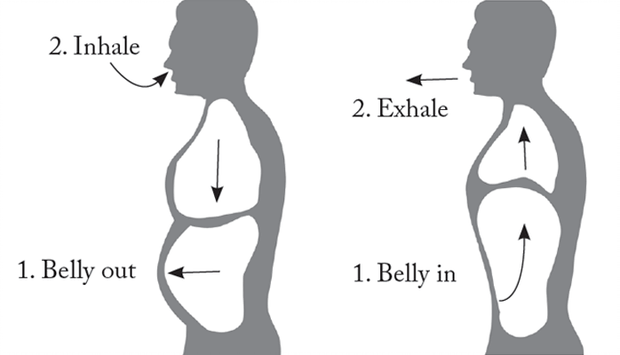
Watch out for your vocal editing
Today’s software gives you incredible control for modifying recorded tracks. If you have some experience with plugins and editing tools, that’s great—but don’t overuse them or become too dependent.
When you’re comping vocals, try to use large sections from a single take. This helps keep the vibe and authenticity of the performance. Only fill in weaker spots with parts from other takes. Focus on the overall performance, not just the pitch of the vocalist. Choose takes that have personality, not just the ones that are technically “perfect.”
Autotune and Melodyne are great tools, but use them sparingly—unless you’re going for that mainstream pop or artificial effect. Only fix the phrases or sections that really need it; don’t put tuning plugins on the whole track.
Basic Vocal Mixing Chain
Corrective EQ
As you might guess from the title, corrective EQ is used to remove problematic or resonant frequencies. It’s crucial to apply corrective EQ before any compression; otherwise, you risk boosting unwanted frequencies, which can make your vocal sound unnatural and poor.
The easiest way to do this is with a parametric EQ. Using a very narrow boosted band, sweep across the entire frequency range until you hear an unpleasant resonance. Once you find it, reduce and cut it out of the mix, keeping the band narrow. The goal of corrective EQ is to surgically remove these resonant frequencies and save yourself trouble later in the mix.

Compression
Compression is key to making your vocals smoother—not just louder. By controlling the dynamic range of your vocals, you’ll find that mixing the entire track becomes much easier.
Although compressors might look complicated, they’re actually quite simple to use. A good starting point for your vocals is a 4:1 ratio, with a medium-fast attack and a medium release. From there, you can experiment with different settings to find the sound that works best for you.
Creative EQ
As the title suggests, this is where you get to be a little creative. You’ve already eliminated any resonant frequencies and shaped the tone to your liking with compression, so now it’s time to add some sparkle to your track.
We recommend starting with a vocal EQ preset. From there, you can fine-tune the EQ bands to perfectly suit your vocals.
Usually, you’ll want to add a slight boost around the 5-6 kHz range. This gentle enhancement will brighten your vocal line and help it naturally stand out. Next, you’ll probably want to cut some of the mid-range, around the 1 to 2 kHz area. Removing this muddy range will tighten everything up and smooth out the tone.
Reverb/Delay
The main purpose of reverb and delay is to create a sense of space around your vocals. Adding reverb can give your track a more natural, acoustic feel and help your singer sound more authentic. However, it’s important not to overdo it—too much reverb can quickly ruin your vocals and even mess up your entire mix! By using the right amount, reverb can help your mix come together and make your track feel more cohesive.
Disclaimer: These are the essential effects you’ll need in your signal chain to improve your vocals. There are many other plugins and effects you can use to enhance your vocals even further, but this is enough to get you started and point you in the right direction.
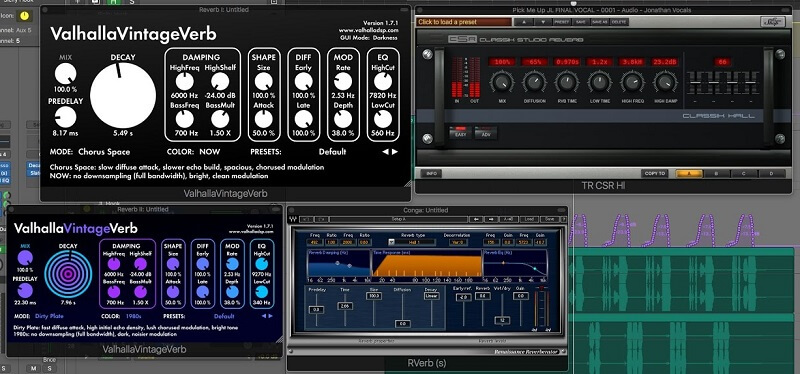
Treating the Room
Once you’ve found a suitable room, stand in the center and clap your hands loudly. Can you hear any echo or reverberation from the clap? The amount of echo in the room will determine how much work you’ll need to do to dampen it. Ideally, the walls in your room should be made of solid brickwork. Generally, the denser the wall material, the more sound energy it will absorb.
Temporary or stud walls will be the biggest challenge when trying to deaden a room, so try to avoid rooms with too many of them. Hanging duvets and blankets can go a long way in deadening a room—the heavier they are, the better. Keep in mind that while acoustic tiles come in various types, their main job is to absorb sound and convert it into another form of energy (heat), so it doesn’t bounce back to the microphone. However, if you’re dealing with outside noise, acoustic tiles won’t do much to help.
Corners
Also, try not to place your microphone near the corners of the room. If you have a budget for acoustic foam treatment, consider investing some of it in bass traps—these are heavy, triangular prism-shaped foam blocks that help reduce the build-up of low frequencies in room corners. You’ll probably have to compromise on some of these elements, but it’s worth taking the time to plan carefully so you can avoid unexpected problems later on in your vocal recording.
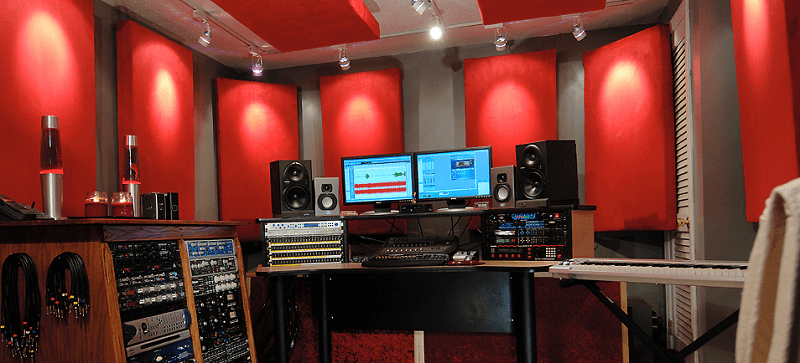
Budget Bedroom Recording Room
To get a great lead vocal sound in a non-professional setting, it’s a good idea to record in a neutral, dry room. Avoid large, echoey spaces with lots of reflections and reverb, since these will affect your vocal quality and make mixing more difficult later. Remember, you can’t make a “wet” vocal recording dry again, so make sure your room is controlled and leans toward dry (but not completely “dead”).
A bedroom works well because beds, blankets, closets, and even curtains absorb sound nicely. If needed, you can build a simple vocal booth with old blankets, curtains, mattresses, and pillows. Adding a few rough wooden panels can help create a more natural sound. The main thing is to avoid reflections and echoes you’d get from hard floors, empty rooms, or very large spaces.
You don’t have to spend a lot on professional acoustic treatment or a fancy vocal booth. There are plenty of DIY options that will improve your home studio acoustics. Here are some tips to make your recording area sound better:
- Record in a smaller room to reduce reverb and standing waves.
- Use thick carpets or rugs to absorb floor reflections.
- Add furniture to the room to soak up sound waves.
- Hang dense materials like rugs, blankets, or foam on the walls to absorb sound.
- Cover windows with curtains to prevent reflections.
- Hang sound-absorbing materials from the ceiling as well.
- Place foam wedges or other sound-absorbing objects in the corners to cut down on frequency buildup.
- Use objects with uneven surfaces to scatter and diffuse sound frequencies.
- Create a temporary vocal booth with mattresses.
Conclusion
At the end of the day, what you’re really trying to capture is emotion. You want the vocal to move and inspire the listener, to evoke real feelings. In the pursuit of the perfect take, there’s always a risk of losing those little imperfections that can make a vocal track so compelling and memorable.
Of course, you should always aim to get the best vocal track you can and capture it as perfectly as possible. But if you have to choose between a technically flawless take and a living, breathing vocal that overflows with honesty, emotion, and passion, the latter will win every time.
Recording great vocal tracks is always a balance of art and science. While using the right tools and proper techniques is essential, it’s just as important to let creativity and artistic instincts guide you. By combining solid recording methods with a sense of artistry, you too can create powerful and captivating vocal performances in your own productions.

